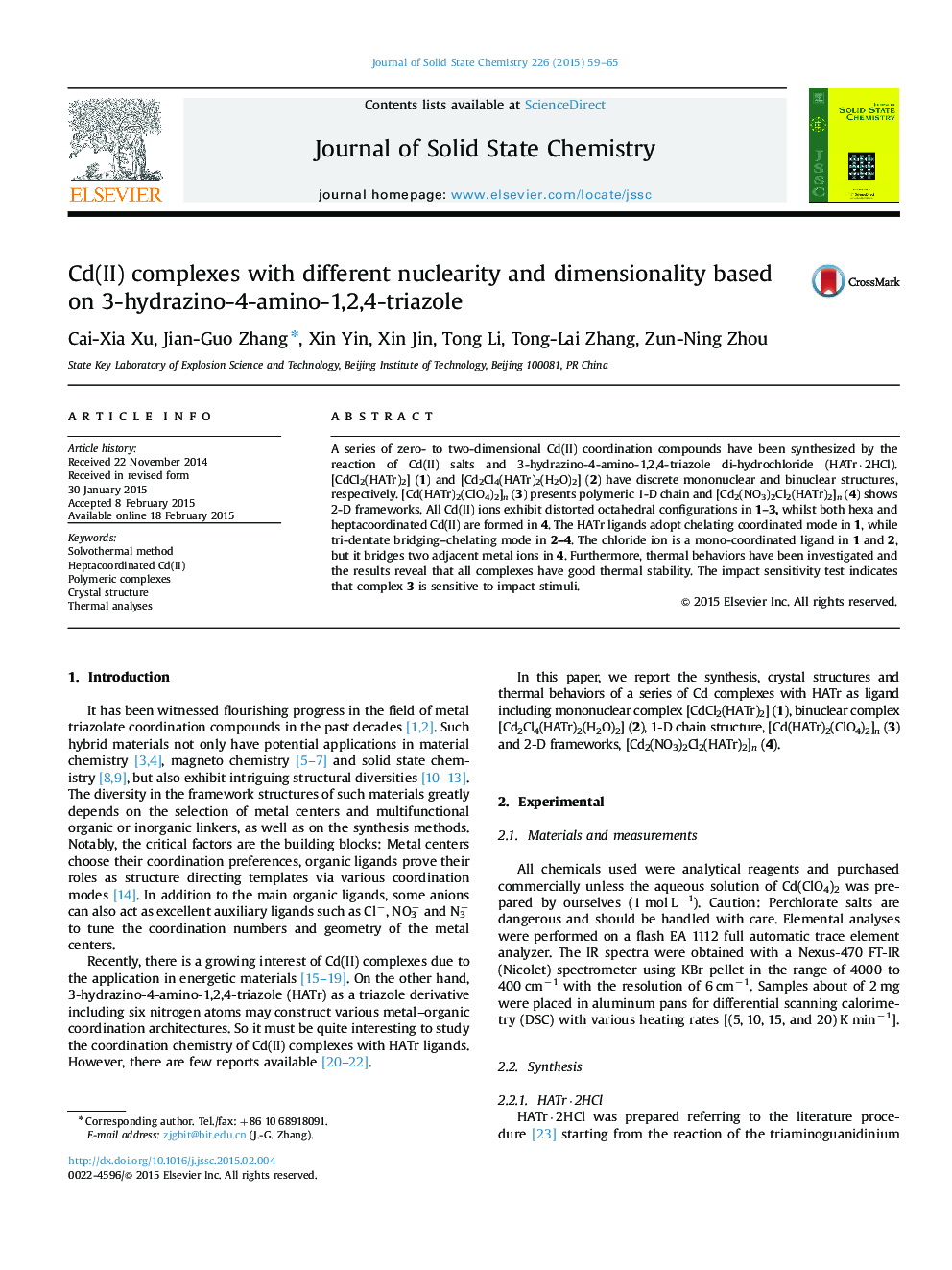| Article ID | Journal | Published Year | Pages | File Type |
|---|---|---|---|---|
| 1328933 | Journal of Solid State Chemistry | 2015 | 7 Pages |
•Cd(II) complexes containing 3-hydrazino-4-amino-1,2,4-triazole ligands.•Mononuclear, binuclear, 1-D and 2-D structures.•Good thermal stability.•Thermal decomposition kinetics.
A series of zero- to two-dimensional Cd(II) coordination compounds have been synthesized by the reaction of Cd(II) salts and 3-hydrazino-4-amino-1,2,4-triazole di-hydrochloride (HATr·2HCl). [CdCl2(HATr)2] (1) and [Cd2Cl4(HATr)2(H2O)2] (2) have discrete mononuclear and binuclear structures, respectively. [Cd(HATr)2(ClO4)2]n (3) presents polymeric 1-D chain and [Cd2(NO3)2Cl2(HATr)2]n (4) shows 2-D frameworks. All Cd(II) ions exhibit distorted octahedral configurations in 1–3, whilst both hexa and heptacoordinated Cd(II) are formed in 4. The HATr ligands adopt chelating coordinated mode in 1, while tri-dentate bridging–chelating mode in 2–4. The chloride ion is a mono-coordinated ligand in 1 and 2, but it bridges two adjacent metal ions in 4. Furthermore, thermal behaviors have been investigated and the results reveal that all complexes have good thermal stability. The impact sensitivity test indicates that complex 3 is sensitive to impact stimuli.
Graphical abstractFour Cd(II) complexes based on 3-hydrazino-4-amino-1,2,4-triazole ligands exhibit diverse structures from mononuclear to 2D networks.Figure optionsDownload full-size imageDownload as PowerPoint slide
